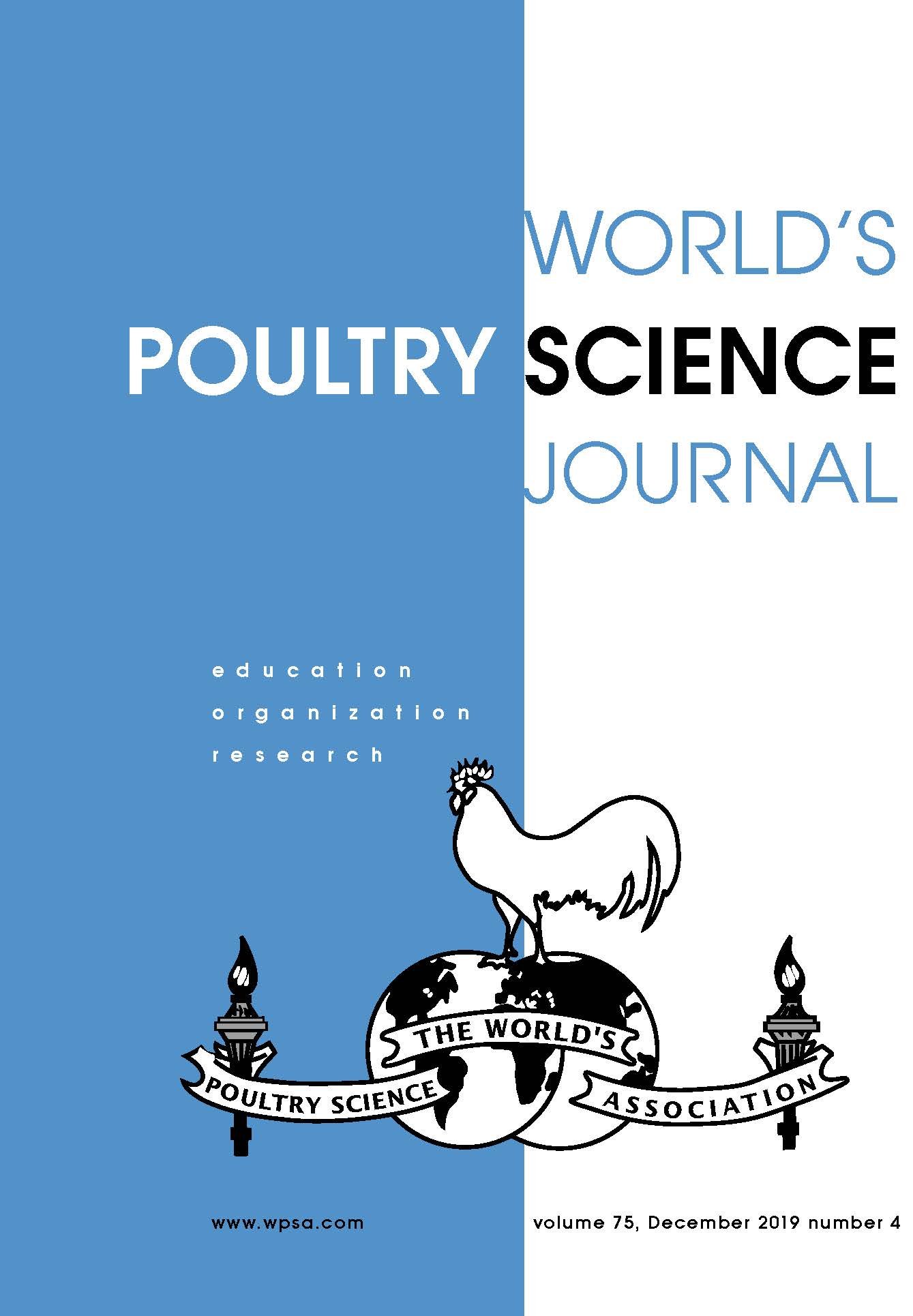Crossref Citations
This article has been cited by the following publications. This list is generated based on data provided by
Crossref.
Randall, John M
and
Peng, Chaoying
1995.
Vibrating Beam Technique for Measuring Animal Natural Frequency.
Journal of Low Frequency Noise, Vibration and Active Control,
Vol. 14,
Issue. 3,
p.
119.
Randall, J. M.
Cove, M. T.
and
White, R. P.
1996.
Resonant frequencies of broiler chickens.
Animal Science,
Vol. 62,
Issue. 2,
p.
369.
Metheringham, J.
and
Hubrecht, R.
1996.
Poultry in transit—A cause for concern?.
British Veterinary Journal,
Vol. 152,
Issue. 3,
p.
247.
Duke, GE
Basha, M
and
Noll, S
1997.
Optimum duration of feed and water removal prior to processing in order to reduce the potential for fecal contamination in turkeys.
Poultry Science,
Vol. 76,
Issue. 3,
p.
516.
Hall, Stephen J.G.
and
Bradshaw, R. Harry
1998.
Welfare Aspects of the Transport by Road of Sheep and Pigs.
Journal of Applied Animal Welfare Science,
Vol. 1,
Issue. 3,
p.
235.
Newberry, Ruth C.
Webster, A. Bruce
Lewis, Nora J.
and
Van Arnam, Charles
1999.
Management of Spent Hens.
Journal of Applied Animal Welfare Science,
Vol. 2,
Issue. 1,
p.
13.
Cockram, M. S.
and
Mitchell, M. A.
1999.
Rôle of research in the formulation of ‘rules’ to protect the welfare of farm animals during road transportation.
BSAP Occasional Publication,
Vol. 23,
Issue. ,
p.
43.
Abeyesinghe, Siobhan M
Nicol, Christine J.
Wathes, Christopher M.
and
Randall, John M.
2001.
Development of a raceway method to assess aversion of domestic fowl to concurrent stressors.
Behavioural Processes,
Vol. 56,
Issue. 3,
p.
175.
Abeyesinghe, S.M
Wathes, C.M
Nicol, C.J
and
Randall, J.M
2001.
The aversion of broiler chickens to concurrent vibrational and thermal stressors.
Applied Animal Behaviour Science,
Vol. 73,
Issue. 3,
p.
199.
MacCaluim, J M
Abeyesinghe, S M
White, R P
and
Wathes, C M
2003.
A Continuous-Choice Assessment of the Domestic Fowl's Aversion to Concurrent Transport Stressors.
Animal Welfare,
Vol. 12,
Issue. 1,
p.
95.
Bergoug, H.
Burel, C.
Guinebretière, M.
Tong, Q.
Roulston, N.
Romanini, C.E.B.
Exadaktylos, V.
Mcgonnell, I.M.
Demmers, T.G.M.
Verhelst, R.
Bahr, C.
Berckmans, D.
and
Eterradossi, N.
2013.
Effect of pre-incubation and incubation conditions on hatchability, hatch time and hatch window, and effect of post-hatch handling on chick quality at placement.
World's Poultry Science Journal,
Vol. 69,
Issue. 2,
p.
313.
Lackner, James R.
2014.
Motion sickness: more than nausea and vomiting.
Experimental Brain Research,
Vol. 232,
Issue. 8,
p.
2493.
Mancera, K
Murray, PJ
Gao, YN
Lisle, A
and
Phillips, CJC
2014.
The effects of simulated transport on the behaviour of eastern blue tongued lizards (Tiliqua scincoides).
Animal Welfare,
Vol. 23,
Issue. 3,
p.
239.
Cobb, Mia
Branson, Nick
McGreevy, Paul
Lill, Alan
and
Bennett, Pauleen
2015.
The advent of canine performance science: Offering a sustainable future for working dogs.
Behavioural Processes,
Vol. 110,
Issue. ,
p.
96.
Reynolds, Randall P.
Li, Yao
Garner, Angela
and
Norton, John N.
2018.
Vibration in mice: A review of comparative effects and use in translational research.
Animal Models and Experimental Medicine,
Vol. 1,
Issue. 2,
p.
116.
Morris, Benjamin K
Davis, R Benjamin
Brokesh, Edwin
Flippo, Daniel K
Houser, Terry A
Najar-Villarreal, Francisco
Turner, Kari K
Williams, Jamison G
Stelzleni, Alexander M
and
Gonzalez, John M
2021.
Measurement of the three-axis vibration, temperature, and relative humidity profiles of commercial transport trailers for pigs.
Journal of Animal Science,
Vol. 99,
Issue. 2,
Roberts, Louise
and
Howard, Daniel R.
2022.
Biotremology: Physiology, Ecology, and Evolution.
Vol. 8,
Issue. ,
p.
123.
Weeks, Claire A.
Tuyttens, Frank A.M.
and
Grandin, Temple
2024.
Livestock Handling and Transport.
p.
463.
Ncho, Chris Major
Berdos, Janine I.
Gupta, Vaishali
Rahman, Attaur
Mekonnen, Kefala Taye
and
Bakhsh, Allah
2025.
Abiotic stressors in poultry production: A comprehensive review.
Journal of Animal Physiology and Animal Nutrition,
Vol. 109,
Issue. 1,
p.
30.

